Art Lesson 48, Part 6
Discover How to Paint Using the Flemish Method
Learn how to paint like the Old Masters!
Old Masters Academy Online Course
Self-study, self-paced online video courseLifetime membershipOne-time payment: $487Enroll Now!Personal Tutoring online + Online Course
Unlimited tutoring by the Academy teachersLifetime membershipOne-time payment: $997Enroll Now!« Back to the Art Lessons List
Painting the First Color Layer over a Grisaille Underpainting
Its time to go on with Margareta’s face. The dead colors are completely dry at this point so we can continue painting with warm flesh colors. For The flash color mix Naples Yellow, Chrome Yellow Hue, White and Scarlet Lake paints. The solvents are hardly used as we need semi-opaque paint to cover the highlights on the face the same way as on the forehead. When this paint is applied over the shadows we can still observe darker places on the portrait – the result of semi transparency of the paint. It’s better to paint thinner where the shadows are – this results in a nice combination of cold underpainting with warm top color. The result is very close to the original tone and the color of human skin.
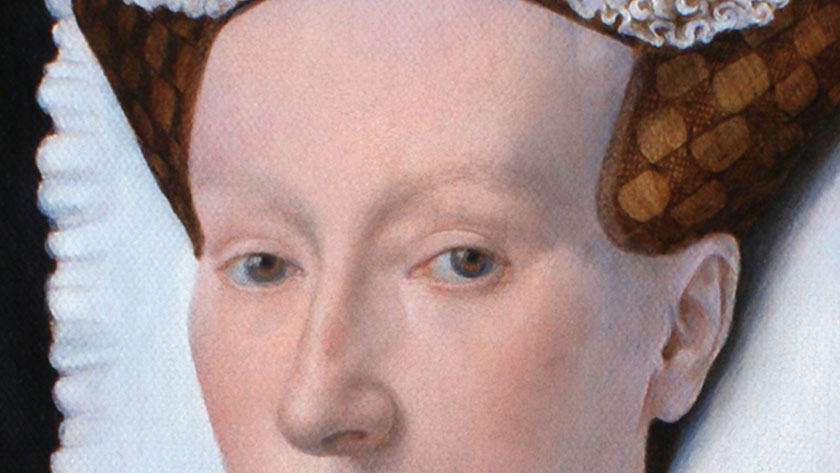
Margareta’s ear is located in a half-shaded area. To deepen the darker parts of the ear we use Raw Sienna and Burned Sienna with medium such as Liquin Fine Details. This paint is applied as a very thin glazing to outline the shape of the ear by deepening its tone.
Using the same paints as applied for the ear, we dilute it more with the medium and work on Margareta’s cast of features – the eyes and nose. We continue applying a very delicate glazing technique to be in full control of the tone of the cast features. We use, now and then, a round soft dry brush to spread the glazing from the darker places to lighter ones.
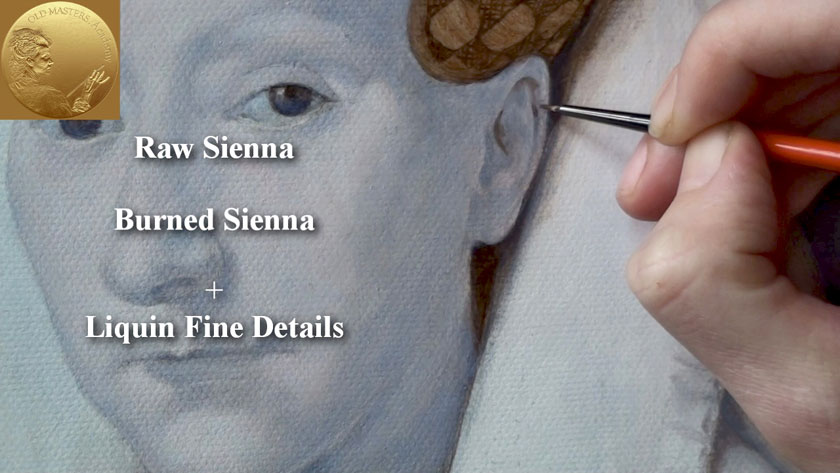
Glazing is a very valuable process. It has always been in use since the invention of the oil medium. All the Italian painters used it. It is an essential part of their system of coloring. The rich, deep color of Titian, the warm flesh of Raphael, and the jewel-like quality of the early German painters are impossible without glazing. The Germans must have made glazes from the white of an egg before the oil came in use. But glazing is the only way to reach the best effect on the quality characteristic of the transparent paints.
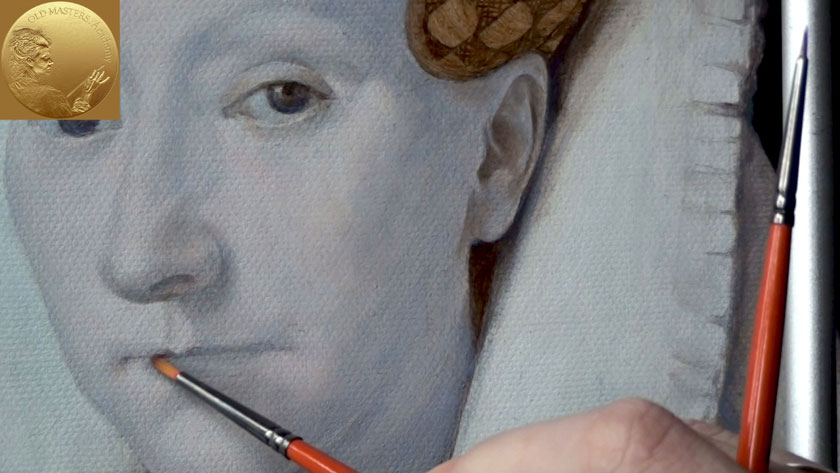
A glaze is a thin wash of transparent color used to cover an underpainting in order to modify its tone or to add a certain effect to it. It is not always a transparent color, but usually it is. Sometimes opaque or semi-opaque color may be used as a glaze when it is thinned with oil or varnish. But do not mix glazing technique with scumbling. Scumbling is rubbed on and is never pure transparent color. Opaque colors are usually used for scrumbling.
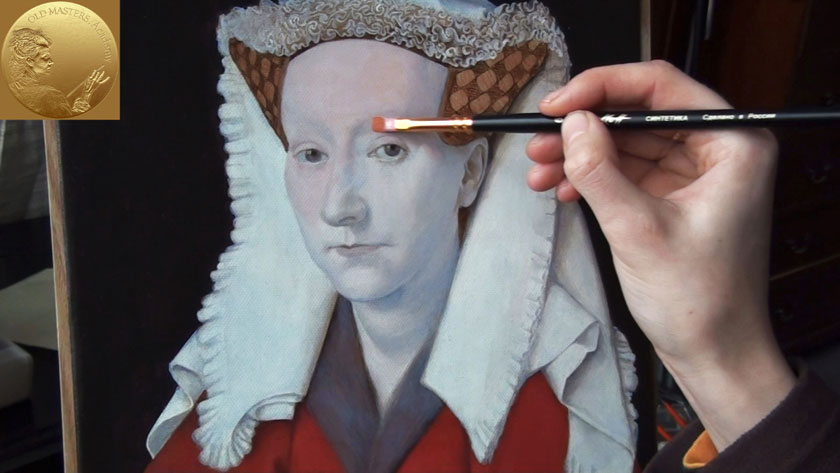
Glazing technique results in an extraordinary effect on the objects that are at a short distance to the viewer. The portrait is a perfect example of glazing as the appropriate method. Keep in mind that multi glazing layers optically move certain parts of the picture closer to the viewer. No other method will help to produce such a result. So, the sky or a remote landscape would be the wrong thing to glaze as it would visually become much closer. However, glazing was the right technique for the picture of Margareta, even though the woman is sitting close by the viewer. Glazing not only provides with much deeper tones but also better illustrates the three-dimensional objects. That is the exact result we are searching for in our painting.
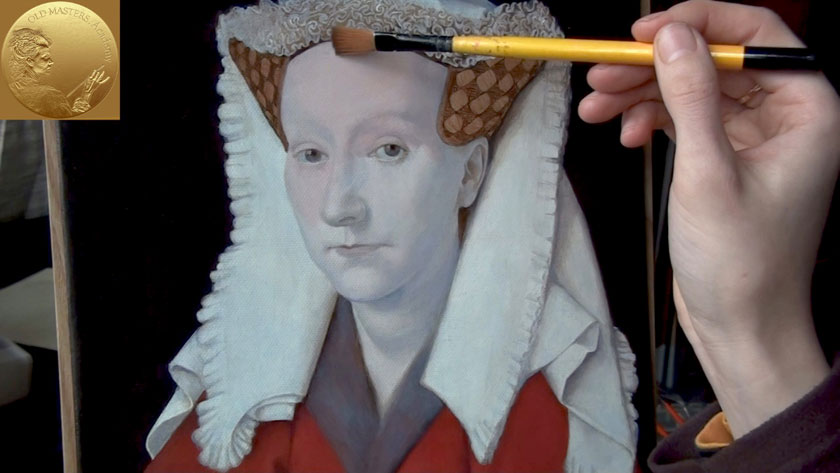
The flesh warm color of the face is to be build up especially on the light parts of the face. We use two brushes at this stage – one brush is used to apply the paint. The other one, that has to be dry and soft, is used to spread the paint towards the darker places. At the same time the paint should be gradually thinned.




